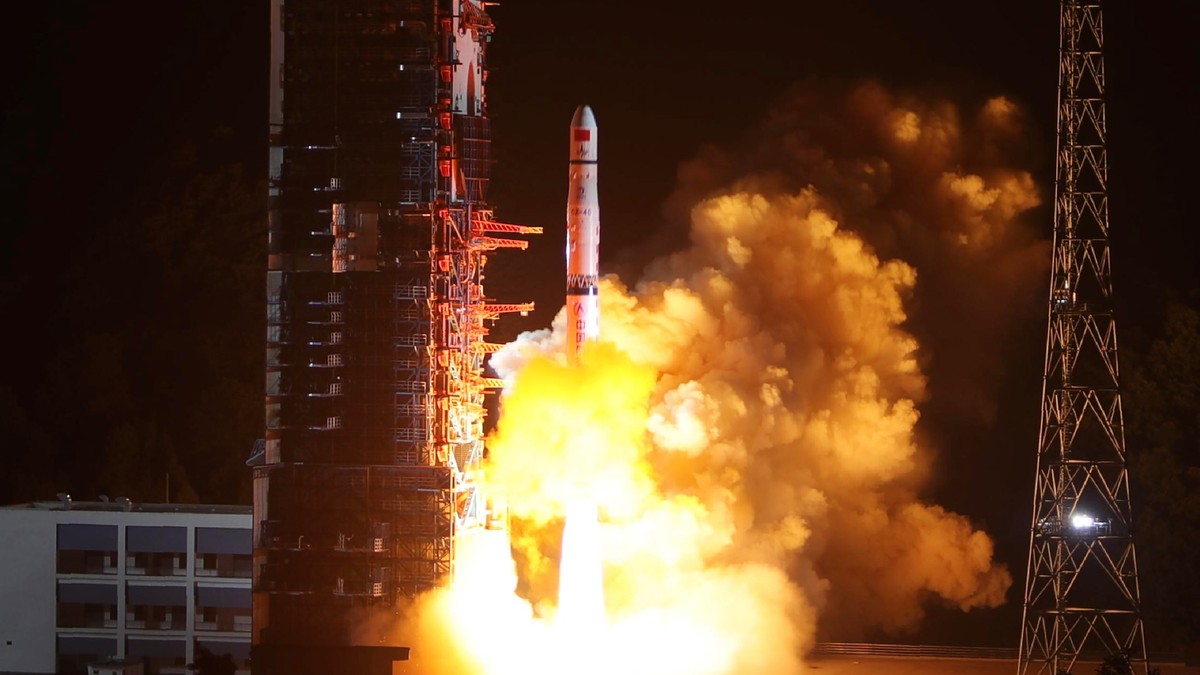China Is Going to Be the First Country to Land on the Dark Side of the Moon

On Sunday night the China National Space Administration launched a communications satellite on a Long March rocket on a 280,000 mile journey to orbit the moon. The lunar orbiter is the initial step in realizing China’s ambition to be the first country to place a lander on the far side of the moon. As the first communications relay satellite in orbit around the moon, the orbiter’s name, Queqiao, is fitting.
It translates to Magpie Bridge, a reference to the birds in a Chinese folk tale who form a bridge once per year to unite two separated lovers. Like the magpies in the story, the Queqiao orbiter will act as a link between the Chang’e-4 lunar lander planned to launch to the far side of the moon later this year and communications stations on Earth. Even though the moon does rotate, the same side always faces the Earth because the amount of time it takes for the moon to rotate on its axis is the same amount of time it takes to make a full orbit around the Earth, as seen on the left below: This phenomenon, known as tidal locking, means that the Chang’e-4 lander on the far side of the moon will never be able to make direct radio contact with Earth.
Instead, the lander must rely on the Queqiao communications relay satellite in orbit around the moon to pass on its messages. The Queqiao orbiter is also carrying an antenna jointly developed with the Netherlands Institute for Radio Astronomy that will be deployed in orbit nearly 40,000 miles behind the moon. The antenna will be used to study star formation shortly after the Big Bang by looking at low frequency signals that are hard to detect from Earth due to interference from the atmosphere.
Source: vice.com